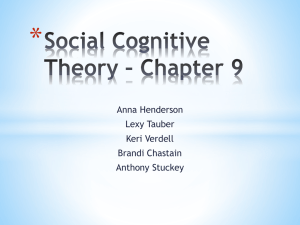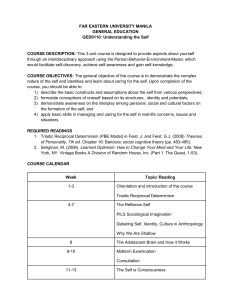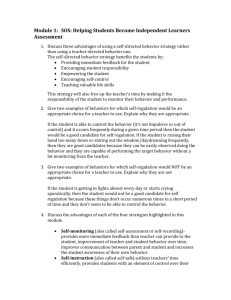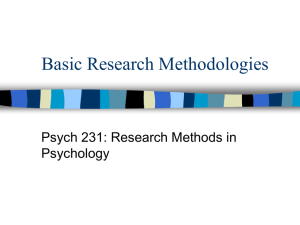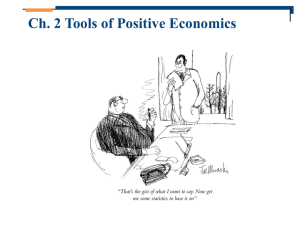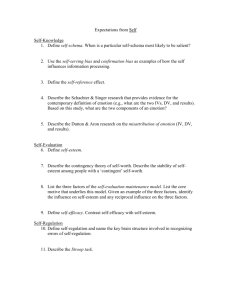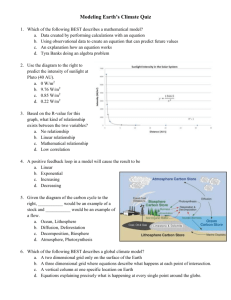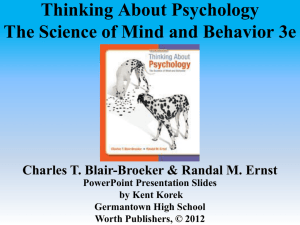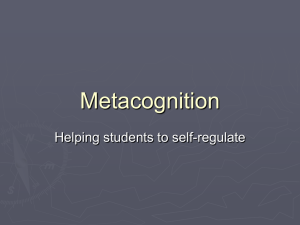Social Learning Theory
advertisement
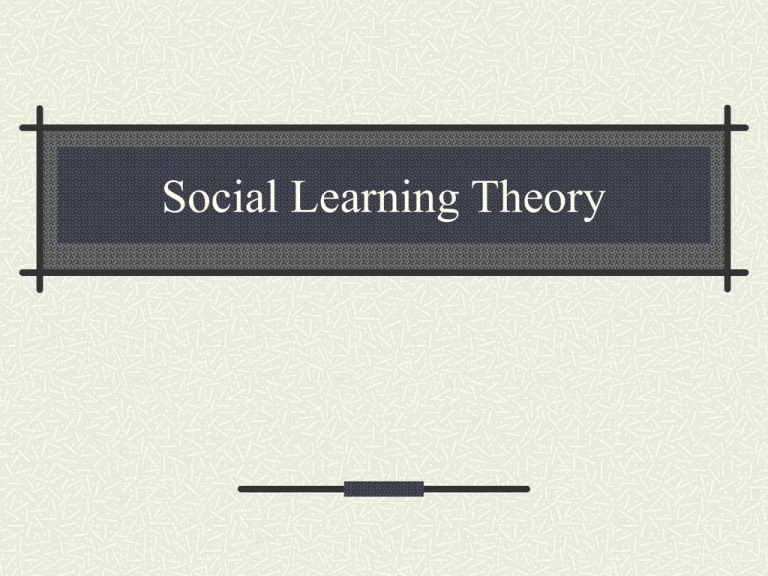
Social Learning Theory Three Key Concepts Observational learning can be more than just mimicking Children are self-regulatory Triadic reciprocal causation provides a model for behavior change Self-Regulation By observing the consequences of behaviors, children regulate themselves By reward and punishment, also. Observational Learning Children learn to play games with complex rules by watching others play. They infer the rules and strategies Triadic reciprocal causation Person (P) Behavior (B) P Environment (E) A person who behaves well may elicit positive responses E Peer pressure, parental pressure Physical appearance B Five Skills (as a child matures, she/he gets better at these) Symbolization Vicarious learning Self-regulation Self-efficacy See the future consequences of present behaviors Self-efficacy How effective a child feels about her/him self determines the child’s behavior If you think you are not good a something you might choose not to attempt something that requires it. A slight over estimation of ones effectiveness seems to be helpful. This one area that clearly speaks to teachers Vicarious Learning By observing what happens to someone else, children learn new behaviors. Someone is punished for doing something, so child learns, maybe, not to do that. Someone is rewarded for a certain behavior so … Symbolization The ability to abstract from observations – The model does such and such and the following occurs to if anyone does such and such the following is likely to occur. The ability to apply learning to new situations Four Components of Observational Learning Attention Retention Production Motivation Notes Children react negatively to hypocrisy Children do best if they slightly overestimate their efficacy Children are greatly influenced by models Girls model themselves after female role models Children of color need role models that look like them. Notes Continued Children learn to “generalize” from a model to be able to apply it or its behavior to other situations. Models and Symbols Models must capture a child’s attention Child must be able to “generalize” the model’s behavior. (Convert it to symbols) (e.g. aggressive behavior) Children can deduce an abstract rule from a series of experiences. (past tense use “ed” at end) (Most kids learn the rules of a game by playing the game and experiencing the rules More on Models And Observation Demonstrate the appropriate behavior. Ask learner to mimic behavior Repeat the above two steps a few times Observe and praise or correct performance
